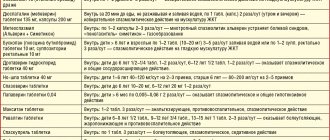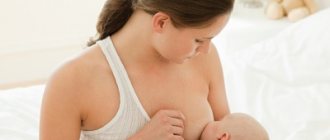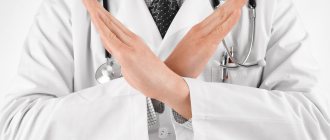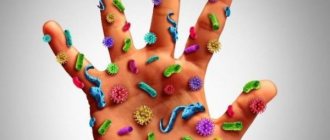Intestinal infection is the most common disease. The largest number of people suffering from this infection live in the hottest countries of our planet. However, this does not mean that the population of our country has not encountered it.
Intestinal infections are especially active in the summer and autumn. However, during the rest of the year, outbreaks of this infection are also recorded, albeit in smaller numbers. Conventionally, pathogens of E. coli are divided into 3 groups:
- Viruses. This group includes rotaviruses, adenoviruses, and noroviruses.
- Bacteria. These include salmonella, shigella, dysentery bacillus, proteus, and E. coli.
- The simplest pathogens. They are considered amoeba and balantidium.
The most vulnerable category of the population to E. coli is children. They are very difficult to treat. After all, in order to eliminate the symptoms of the disease, you must take all medications prescribed by your doctor and follow a therapeutic diet. In this article we will look at how to feed a child during a therapeutic diet?
Therapeutic/preventive diet for intestinal infection
Intestinal infection is one of the common diseases among adults and children.
Occurs against the background of the development of pathogenic microflora in the intestines. The route of infection is oral-fecal. Most often, bacteria enter the body when swimming in open water or eating unwashed fruit. Symptoms of infection are pronounced: nausea, vomiting, diarrhea, fever, lack of appetite. And the most important thing with this pathology is to prevent dehydration of the body.
General rules
In case of acute viral or bacterial intestinal infection, you need to adhere to several nutritional rules:
- Don't force yourself to eat if you have no appetite. Moreover, the volume of the daily portion is reduced by 50% during an exacerbation and by 15% after completion of treatment.
- The number of meals increases. One serving size should be approximately 2 tablespoons .
- Eliminate or strictly limit carbohydrates and fats.
- Avoid sour fruits.
- Consume fermented milk products daily.
- Increase the amount of water you drink.
If vomiting occurs after eating food, then instead of eating it is better to drink water in small sips.
Products approved for consumption
The diet for intestinal infections imposes restrictions on foods allowed for consumption. What to eat:
- porridge with water;
- cottage cheese;
- mashed potatoes without milk;
- lean meat;
- chicken bouillon;
- baked apples;
- vegetable purees.
You need to steam, boil and bake dishes. The consumption of stewed foods is rarely allowed. Fried foods are completely prohibited.
Prohibited Products
There are many more prohibited foods for intestinal infections:
- whole milk;
- porridge with milk;
- carbonated drinks;
- dishes with flavors and dyes;
- fresh bread;
- rye bread and crackers;
- fatty meats;
- flour products;
- mushrooms, legumes and nuts;
- fatty fish;
- rich broths;
- fermented milk products: fermented baked milk, kefir, etc.;
- scrambled eggs;
- vegetables and fruits rich in fiber: radishes, cucumbers, radishes, lettuce, grapes, bananas, plums.
Fresh vegetables should be abandoned during the period of exacerbation. It is allowed to introduce them into the diet only from day 4, in the absence of vomiting and diarrhea.
Sample menu for 5 days
Proper nutrition during an intestinal infection is the key to a quick recovery.
If you do not adhere to the diet, then not only the intestines will suffer, but also other organs of the digestive system. Taking into account the list of permitted and prohibited products, a menu is drawn up. As a rule, strict dietary restrictions are needed for the first 5 days of illness. The menu for this time will look like this: Day Breakfast Lunch Dinner
| 1 | Rice porridge on water | Vegetable puree soup | Cottage cheese |
| 2 | Buckwheat | Chicken soufflé | Chicken bouillon |
| 3 | A piece of cheese, rosehip decoction | Vegetable stew | Veal puree soup with croutons |
| 4 | Baked cheesecakes | Fish soup | Rice porrige |
| 5 | Crispbread with a piece of cheese | Rice porridge with a piece of boiled chicken breast | Chicken bouillon |
Please note that the daily menu must include soups. This is necessary to replenish lost fluid in the body. In addition, soups are faster and easier to digest, do not injure the stomach and help with nausea.
From day 6 of the diet, in the absence of symptoms of intestinal infection, you can gradually switch to a common table. Add 1-2 products to your diet daily. If diarrhea and nausea persist, continue to follow these dietary guidelines.
Expert advice
Doctors with an intestinal infection give recommendations regarding the patient’s nutrition:
- The food should be warm. Avoid cold and hot foods that irritate the mucous membranes.
- After prolonged vomiting, you should eat only liquid and semi-liquid foods. Solid foods are excluded.
- For the first 1-2 days, if vomiting bothers you, you should limit yourself to breadcrumbs and oatmeal porridge.
- You should not drink medicinal mineral water during an exacerbation of intestinal infection.
- Pure water becomes the main drink during treatment. Moreover, you need to drink it not as thirst arises, but in excess. The daily norm increases by 2 times. But don’t immediately drink a bottle of water. You need to drink in small sips in small volumes, but very often.
- Adhere to the therapeutic diet table No. 3 and 4 .
For an uncomplicated viral infection, a therapeutic diet and drinking regimen are sufficient. But still, recommendations for treatment should be given by a doctor.
Source: https://beaf.pro/diets/dieta-kishechnaya-infektsiya/
Reviews and results
Among patients who have suffered an acute intestinal infection, positive reviews of dietary nutrition and a belief in its necessity and effectiveness for a quick recovery predominate.
- “... 2 weeks ago in the morning, against the background of general well-being, the child developed severe watery diarrhea, and a little later - vomiting and a rise in temperature. The child became lethargic and a little lethargic. He categorically refused food. They called a doctor who diagnosed an acute intestinal infection: rotavirus gastroenteritis. Prescribed treatment. We immediately bought all the necessary drugs. They gave the child plenty to drink, forced her to drink saline solution every 15 minutes for rehydration, still mineral water, boiled water, rosehip infusion, herbal teas with chamomile and linden, and dried fruit compote. The next day, little by little they began to give me weak broth (chicken with vegetables) and thin rice porridge. A day later - in small quantities light mucous soups, a piece of chicken breast, fish. The child had no appetite for almost a week and only then did he become interested in food. I added boiled pureed vegetables, fermented milk products and grated cottage cheese to the diet. And even when the symptoms had almost disappeared, I, on the doctor’s advice, kept the child on a diet for another month.”
How to eat if you have an intestinal infection?
In acute intestinal infections, the digestion and absorption of food is disrupted. Pathogenic microorganisms release toxic substances and cause inflammation of the intestinal mucosa.
Proper nutrition during illness creates conditions for the regeneration of damaged cells and restores the functioning of the gastrointestinal tract.
Principles of therapeutic nutrition
- Individuality . The diet is prescribed taking into account the prevailing symptoms, severity of the disease, age, concomitant pathology, and taste preferences.
- Avoiding hunger breaks . Previously, in the acute stage of the disease, doctors recommended a tea and water break for 1-2 days. Recent research has shown that fasting slows down the recovery of intestinal function. Refusal to eat leads to nutritional and energy deficiencies. Vomiting during intestinal infections lasts no more than 6 hours. After vomiting stops, start eating.
- Gentle principle . For 2-5 days, the most gentle diet is prescribed. The basis of the diet consists of foods that do not irritate the mucous membrane of the stomach and intestines, are quickly digested, and are easily absorbed. Avoid foods that cause increased gas formation, stimulate the production of bile, and gastric secretion. Food is ground using a blender, boiled or steamed. As your health improves, the diet is gradually expanded. The diet includes cutlets, meatballs, and dishes baked in the oven.
- Temperature regime. The recommended food temperature is not lower than 15 °C and not higher than 60 °C.
- Fractional nature of nutrition. Eating small portions 5-6 times a day facilitates digestion and absorption. In the acute stage of the disease, the amount of food is reduced, and the missing volume is replenished with liquid.
- Eating according to appetite . Eating forcefully provokes vomiting and worsens diarrhea.
- Drinking regime . To prevent dehydration from vomiting and diarrhea, drink at least 2 liters of fluid throughout the day.
List of products and dishes
| Allowed | Forbidden |
In the acute stage of the disease
In the subacute stage (starting from 4-5 days)
|
|
Drinking regime
Vomiting and diarrhea cause the body to lose fluid and electrolytes. If they are not replenished, dehydration will develop, so normalize your drinking regime at the first signs of illness. To avoid causing repeated vomiting, take 1-2 sips of liquid every 10-15 minutes.
What drink?
- Salt-free solutions : sweetened tea, rice broth, dried fruit compote, raisin broth, liquid jelly.
- Glucose salt solutions (compensate for the loss of electrolytes): buy Oralit, Regidron, Glucosolan at the pharmacy or prepare the mixture yourself.
Glucose salt solution recipe
Take 1 liter of warm boiled water, add a teaspoon of salt, 6 teaspoons of sugar, half a teaspoon of baking soda; stir. Instead of regular table salt, you can use a special dietary supplement called “cardiosol”, which in addition to sodium chloride contains magnesium and potassium.
We recommend reading:
The most common infectious bowel diseases
Take at least 2 liters of fluid per day. Alternate salt-free solutions with glucose-salt solutions. Drinking only salt-free liquids will not replace lost electrolytes. A large dose of glucose-salt composition will increase the concentration of salts in the intestines and increase diarrhea.
Recommendations after recovery
A month after your stool has normalized, gradually return to your normal diet. Keep a food diary in which you write down your daily menu and how you feel.
After an infectious lesion of the intestine, in 25% of cases, enzyme deficiency, intolerance to dairy products, dysbacteriosis, and chronic enterocolitis develop.
If, after recovery, abdominal pain and stool disorders periodically occur, consult a gastroenterologist.
Source: https://ProKishechnik.info/profilaktika/pitanie/pri-kishechnoj-infekcii.html
Let's sum it up
Treatment of intestinal infections in both children and adults involves strict adherence to diet. Proper nutrition and regular drinking play a primary role in restoring the functions of the gastrointestinal tract (GIT) after a disorder. In no case should you completely eliminate the consumption of food, because the body needs strength to fight infection.
During treatment, carefully approach the nutrition of children under 1-1.5 years of age, since they normally have enzyme deficiency in the gastrointestinal tract. Often, incorrectly selected foods cause attacks of colic, vomiting, nausea, and diarrhea (diarrhea). To prevent complications, protect your child from eating junk food.
Diet for intestinal infection: menu examples and recipes
› Diet for poisoning ›
Nutrition for intestinal infections in adults, as well as in children of any age, is an important part of general therapy.
It allows you to prevent additional injury to the mucous membranes, reduce the severity of inflammatory changes in the digestive tract, and normalize the production of enzymes.
The diet for intestinal infection, as well as during the recovery stage, is prescribed by the attending physician, taking into account the nature of the disease, the patient’s age and the characteristics of his usual diet.
General recommendations
According to nutritionists, daily nutrition for acute intestinal infections must meet the following requirements:
- The menu should be varied, but at the same time based on products that are easily digestible.
- It is necessary to give preference to chemically and mechanically gentle dishes - avoid overly sour and spicy ingredients, as well as coarse dietary fiber.
- The first couple of days after the onset of the disease, you need to reduce the daily diet by 15–20%. If the acute intestinal infection is severe, it is recommended to reduce the amount of food consumed to 50%.
- Unlike food poisoning, fasting for acute intestinal infection is not recommended, even prohibited. The same rule applies to “water-tea” diets. Drinking regimen for indigestion, diarrhea and vomiting plays an important role, but it does not replace good nutrition.
- Dishes must be served warm. The optimal temperature is 35–40 degrees. Cold and hot dishes are undesirable, as they injure the mucous membrane, are less digestible, and also create a favorable environment for the proliferation of pathogenic bacteria.
- The diet should contain a sufficient amount of plant and animal proteins. They are necessary for the normal functioning of the immune system and the fight against infection.
- fats and carbohydrates should be reduced. This limitation is explained by the characteristics of pathogenic bacteria that actively spread in such an environment. In addition, experts recommend reducing the overall caloric content of the diet: the main forces of the body should be aimed at fighting the disease, and not processing food.
- It is necessary to limit the consumption of table salt. It cannot be completely excluded from the diet, but the concentration of sodium chloride should be lower than usual. Otherwise, there may be an imbalance in the electrolyte balance in the body, and, as a result, a slowdown in the process of removing enterotoxins.
- It is useful to include fermented milk products enriched with lactobacilli in your diet. They increase local immunity, eliminate dysbacteriosis, and help destroy infectious agents. This measure is mandatory if the therapy includes antibiotics and other potent drugs.
- It is advisable to include low-lactose and lactose-free products in the diet. The restriction applies until complete recovery.
Treatment of infectious diseases in pregnant women should be under medical supervision. The diet is prescribed by the doctor, taking into account the gestational age and the individual characteristics of the patient.
What can you eat
The following list of products is recommended for adult patients in the acute stage of the infectious process and during the recovery period:
- rice, buckwheat, semolina;
- low-fat cottage cheese, kefir, yogurt;
- vegetable or light chicken soups, especially slimy ones;
- homemade jelly;
- watermelons;
- bananas;
- apples and pumpkin baked with honey;
- boiled vegetables;
- dietary varieties of meat, fish - horse meat, chicken, turkey.
What can children eat after an intestinal infection? The therapeutic diet depends on the baby’s usual diet:
- If the child feeds exclusively on mother's milk, no special changes in the diet are needed. Doctors recommend putting it to the breast more often, but not overfeeding.
- A bottle-fed baby should be fed lactose-free formulas - Frisopep, Alfare, Nutrimigen. If complementary foods have already been introduced into the diet, the addition of new foods should be temporarily limited.
- It is useful for older children to give fermented milk products and acidophilus mixtures. They contain a high concentration of vitamin B and C, amino acids, bifidobacteria and lactobacilli. But it is not advisable to use one type of yogurt or kefir - you need to combine different lactic acid products.
- During the recovery stage, it is important to introduce boiled vegetables and baked fruits into the diet. They are rich in dietary fiber, which plays the role of natural sorbents - they absorb the remains of enterotoxins, improve peristalsis, and also help restore digestion in a short time.
It is important to provide the baby with proper care - to control not only meal times, but also adherence to sleep and rest patterns.
What not to do
It is necessary to exclude from the diet any foods that stimulate intestinal motility, as well as activate the processes of rotting and fermentation in the lower parts of the digestive tract:
- raw vegetables, fruits, berries, especially sour ones;
- fresh juices;
- butter and vegetable oil - in its pure form, and not as part of dishes;
- oat groats;
- prunes, dried fruits;
- confectionery;
- fresh bread, pastries.
Products that can cause dyspeptic symptoms - bloating, pain in the epigastric region, heartburn - are prohibited. In addition, any food with a laxative effect is contraindicated. Until the end of treatment, the following are prohibited:
- citrus;
- pears;
- plums;
- beet;
- cucumbers;
- sauerkraut;
- beans.
You should not eat fish and meat with a high percentage of fat content:
- salmonids;
- goose;
- duck;
- pork;
- lamb
With pronounced symptoms of intoxication, in the first days after the onset of the disease, it is not recommended to eat black bread - it causes increased fermentation in the intestines and increased motility. Whole cow's milk is also prohibited in the acute period: it can cause watery diarrhea.
Any canned foods, sauces, hot and spicy spices are prohibited. In addition, you should absolutely not drink alcohol, sweet carbonated drinks, strong tea and coffee.
The diet after an intestinal infection should be followed until the symptoms disappear completely. New foods should be introduced into the diet gradually so as not to cause excessive stress on the digestive tract. At the same time, you should not get carried away with products with astringent properties, otherwise you can cause constipation.
Sample menus and recipes
It’s easy to understand what you can eat if you have an intestinal infection with the help of examples. At the acute stage, focus on this approximate menu:
- First breakfast. Rice porridge (crushed cereal) or semolina, cooked in water, with a semi-liquid consistency. You can also prepare porridge from whole grains, but then rub it through a sieve. For dessert - weak black tea with sugar, crackers from unleavened white bread.
- Lunch. Cranberry jelly, unsweetened crackers or unleavened bread crackers.
- Dinner. Broth made from lean beef with breadcrumbs. As a second course - light meat soufflé. For dessert - a decoction of rose hips.
- Afternoon snack. A glass of berry jelly or blackcurrant jelly with natural gelatin.
- Dinner. Puree buckwheat porridge, steamed chicken cutlet. For dessert - compote of fresh sweet apples or a mug of weak tea.
Below are recipes for dishes that are allowed throughout the entire period of the disease.
Baked apples
Select a few medium-sized sweet apples and rinse them under running water. Due to the fact that the vegetables will bake together with the skin, it is advisable to brush it with a stiff brush. Using a sharp narrow knife, you need to remove the core of the apples, being careful not to pierce them to the bottom - otherwise the juice will leak out during baking.
Place a little flower honey into the hole formed. In its absence, it is allowed to use sugar, but in small quantities. You should place a piece of butter.
The oven needs to be preheated to 190 degrees. Place the apples on a baking sheet and sprinkle with water. It is necessary to pour a little liquid onto the baking sheet itself so that the baked goods do not burn.
The cooking process takes 30–40 minutes. Its end can be recognized by its rich aroma. The pulp of the finished apples should be tender and juicy.
Steamed chicken cutlets
The dish is prepared in a slow cooker or double boiler. But if you don’t have them, any regular saucepan will do. Fill it with water to about a quarter of the total volume, bring to a boil, and cover the top with a metal sieve or a regular colander. The cutlets are placed on this structure. They will cook faster than in a slow cooker - about a quarter of an hour, but they will come out no less tender.
To prepare, you need to take 0.5 kg of chicken fillet and pass through a meat grinder or blender. Soak a couple of slices of white bread in a third of a glass of milk. Mix the ingredients, add a raw egg, chopped onion and salt to taste. Then cutlets are formed and steamed.
During the recovery period, you can diversify the recipe by adding a tablespoon of low-fat sour cream. To add a piquant taste, chop the herbs (parsley, dill) and also add them to the mixture.
Diet for intestinal infection: examples of menus and recipes Link to main publication
Source: https://otravamnet.ru/pitanie-otravleniya/dieta-kishechnaya-infektsiya.html
What mothers should pay attention to
Mothers complain of child lethargy after rotavirus. A balanced diet, vegetables, fruits rich in vitamins, and fresh air help to recover.
I’m interested in what day is it permissible to wash. It is necessary to wipe the child with a damp towel in the first days of illness, when the high temperature does not allow swimming. After the temperature subsides, it is permissible to wash in the bathroom or take a shower.
Moms ask about walking with rotavirus. It is easily transmitted to others - the sick person is isolated from healthy children, provided with individual utensils and hygiene items. Take a closer look at how the child recovers from an illness and at his nutritional habits.
The condition improves on days 3-5, the temperature drops, and the baby is bathed. You should not have contact with healthy children; avoid going for walks.
10-15 days after the onset of the disease, intestinal function normalizes, the child becomes active and begins to eat. It is permissible to walk outside, not forgetting about hand hygiene: immunity to rotavirus is not developed, and there is a possibility of relapse.
You should refrain from going to the bathhouse or public places with your child to avoid infecting others. The baby's room and used areas are disinfected.
The disease has several names: rotavirus gastroenteritis, stomach or intestinal flu, rotavirus infection. It is bacterial in nature. A child’s stomach ache after rotavirus is precisely because of bacteria. The incubation period lasts up to 5 days. An adult or child who has become infected with this disease is considered a carrier of the infection throughout the entire period from the moment of infection until complete recovery. The duration of the disease depends on the age and capabilities of the body. Adults tolerate it more easily; with proper therapy, they begin to recover on the seventh day.
Similar article - You can eat before donating blood for HIV
What should you eat if you have an intestinal infection?
An intestinal infection cannot be treated without medication, but it is equally important to follow a diet. It is necessary for the complete restoration of the mucous membranes of the gastrointestinal tract and digestion.
Some people prefer to fast for the entire period of illness, but this worsens their overall health, aggravates the course of the disease, and regeneration of the intestinal mucosa occurs extremely slowly.
How to eat properly, we will find out further.
The essence and benefits of diet therapy
If the human digestive system is affected by pathogenic microorganisms, they negatively affect the body as a whole and provoke an intestinal infection, the treatment of which cannot be avoided without diet. Its essence is to reduce food portions and drink more.
The more severe the degree of intestinal infection, the less food should be consumed, and the number of meals should be increased to 8 times a day. It is forbidden to go hungry.
This approach to nutrition helps a person:
- avoid dehydration;
- do not irritate the mucous membranes of the intestines and esophagus;
- replenish the balance of vital substances - macro- and microelements, vitamins;
- normalize the digestion process.
Diet rules
In order for food to have a beneficial effect on the digestive system during an intestinal infection, adhere to the following rules:
- The menu includes a variety of easily digestible dishes, but they should not be irritants to the mucous membranes of the esophagus and intestines.
- For heat treatment of products, boiling or steaming is used.
- Dishes are eaten in pureed puree form.
- Limit the consumption of salt, carbohydrates and fats.
- Reduce the number of calories.
- Eat warm dishes (food temperature should be between 33-36°C), but in small portions. The optimal volume is 150-300 g.
What foods should you exclude from your diet?
Avoid foods that can enhance the functioning of the digestive system and the processes of rotting and fermentation. These are:
- fried, sweet, spicy and salty foods;
- smoked meats, canned food, semi-finished products;
- milk and dairy products; They enhance intestinal function and fermentation processes, since the enzymes that are responsible for the breakdown of lactose - milk sugar - die.
- representatives of the legume family - chickpeas, peas, soybeans, beans, lentils, beans;
- mushrooms, nuts;
- spices and seasonings;
- hard-boiled and scrambled eggs;
- from cereal products - millet, barley and pearl barley;
- sour fresh fruits, for example, citrus fruits, also pears, plums, grapes;
- raw vegetables - beets, cabbage, radishes, cucumbers;
- sauerkraut;
- greenery;
- desserts – chocolate and confectionery, fresh pastries;
- carbonated drinks, coffee;
- any oils of both vegetable and animal origin.
How to create a menu?
At the initial stage of an intestinal infection, they completely refuse food if there is severe vomiting and diarrhea, and they are frequent. Now, the main thing is to avoid dehydration, so the patient should drink a lot. The following drinks are recommended during this period:
- not strong black or green tea;
- cocoa brewed in water without adding dairy products;
- decoctions made from bird cherry or blueberries;
- dried fruits compote;
- pharmacy (or homemade) rehydration products.
These drinks contain a tannin and astringent substance - tannin, which helps slow down intestinal motility and reduce fermentation processes. When clinical symptoms decrease, products are introduced that help replenish nutrients, strengthen the immune system and restore mucous membranes. It is good to introduce fermented milk drinks with bifidobacteria and lactobacilli into your diet.
Preference can be given to kefir and acidophilus, which is due to two facts:
- They are rich in beneficial bacteria, which help increase the amount of ascorbic acid (vitamin C) and B vitamins and improve digestion processes.
- They have a bactericidal effect, which allows them to fight pathogenic microflora and remove toxic substances from the body.
If you prefer dairy products, then choose those that do not contain lactose or its amount is very low.
At the very beginning of the disease, exclude oatmeal, since it increases fermentation, and black bread, which stimulates intestinal motility and causes increased bowel movements. After reducing the intoxication of the body, the menu is drawn up taking into account the following rules:
- For first courses, a variety of slimy soups are desirable. They are cooked in a low-fat broth using fish or meat with the addition of meatballs, meat quenelles or egg flakes.
- Instead of bread products, it is allowed to eat crackers made from premium white loaf or biscuits.
- For lunch you can serve cutlets, souffle, meatballs, which are cooked only by steaming. For minced meat, use chicken, turkey or beef. The meat is ground in a meat grinder with a fine mesh, turning it up to 4 times.
- Eggs are allowed for breakfast, boiled soft-boiled or steamed into an omelet. Fresh cottage cheese and cottage cheese soufflé are also allowed.
- Porridges must be pureed. For a sick person, porridge made from buckwheat, rice, semolina or oatmeal will bring the greatest benefit. They are boiled in water or weak meat broth.
- Among the drinks, the most beneficial are jelly and rosehip decoctions. Kissel envelops the mucous membranes of the digestive system and soothes it, and the starch included in its composition is a natural sorbent that removes toxic substances from the body. A decoction of rose hips is rich not only in minerals and vitamins, but also in tannins.
- For dessert, you can serve blueberry or bird cherry jelly.
The daily calorie content should first be 2000 kcal, and then it is increased to 3000 kcal. At the same time, new foods are not included in the diet, only the portion size is increased.
Diet for intestinal infections in children
Children's bodies are more susceptible to such diseases. The main danger is dehydration (or dehydration), as it occurs more quickly than in adults. So, it is necessary to ensure that the child drinks enough, but food should initially be completely excluded, introducing it in small portions as the symptoms of the disease subside.
Acute phase of the disease
On the first day, children's doctors recommend using mint infusions or lemonade, as they can reduce the urge to vomit. To prepare a drink from a lemon wedge:
- Mash the lemon in a glass.
- Pour in hot boiled water.
- Infuse the drink for 20 minutes.
- Stir 1 teaspoon of honey into the lemonade.
Give the child 2 tablespoons of drink every 15–20 minutes.
Instead of lemonade, you can give a special solution - Regidron, which helps to quickly restore fluid in the body and also replenish the balance of electrolytes. It usually contains sodium chloride, which is nothing more than ordinary table salt and calcium.
It can be purchased ready-made at a pharmacy or made independently at home:
- Dissolve 2 tablespoons of sugar in 0.5 liters of clean water.
- Add 1/4 teaspoon each of baking soda and salt.
- Mix the mixture thoroughly.
During the first hours of illness, children should drink a solution at the rate of 60 ml per 1 kg of body. As soon as the patient's condition improves, the dosage is reduced to 5 ml per kilogram.
In the acute phase, children are strictly prohibited from drinking milk.
However, if the child is breastfed, he continues to be fed breast milk, since it helps fight the disease better than any medicine and perfectly supports the immune system.
If the child is artificial, it is necessary to switch to lactose-free formulas, since the disease destroys the enzymes that break down lactose, otherwise the child will suffer from severe abdominal pain and diarrhea.
After the acute phase
When the symptoms of infection weaken, they begin to introduce small portions of light food - 100-200 g is enough. It is better to start with the following foods:
- Cereal decoctions from rice or oats.
- Kissels or low-fat broth.
- Boiled vegetables and baked fruits.
They help normalize stool and fight intoxication.
During the recovery period, be sure to introduce pectin-containing fruits and vegetables - apples, carrots, blueberries in puree form. This is due to the following facts:
- Pectin is a colloid that binds water and swells to form a foamy substance. It passes through the intestines and adsorbs food debris, toxins, and pathogenic bacteria.
- Organic acids that make up fruits have bactericidal properties.
Of course, the fruits are rich in vitamins, minerals, carotenes and substances necessary for the normal functioning of all body systems.
Sample children's menu
- The morning begins with porridge from permitted cereals, boiled in water, a portion of freshly prepared cottage cheese and weak black tea with 1 teaspoon of sugar.
- Banana and applesauce is served for lunch.
- For lunch, prepare a weak broth from chicken, rabbit or beef with the addition of rice, oatmeal or semolina, and steamed meatballs.
For third - berry jelly. - For an afternoon snack, they give a compote of dried fruits - dried apricots, apples, raisins, rose hips.
- In the evening, they dine on a steamed omelette, buckwheat, semolina or oatmeal cooked in water, and drink herbal tea.
- Before going to bed, drink oat bran jelly.
Diets are followed for 2 weeks, and after complete recovery they return to the usual menu. So, in treating an intestinal infection, it is important not only to take the right medications, but also to follow a healthy diet.
In this case, it is worth proceeding from the phase of the disease, because during exacerbations, it is preferable to drink plenty of fluids, and after the symptoms have subsided, you can already introduce foods from the permitted list.
Source: https://zen.yandex.ru/media/id/5a0fe85d780019f77ac8ba37/kakoe-doljno-byt-pitanie-pri-kishechnoi-infekcii-5a1ebff25a104f8c10d28066
Principles of the dietary regime
If an infectious infection occurs, treatment is necessary, which necessarily involves the introduction of a special dietary regimen. During this period, you should eat steamed or boiled foods. Ready meals should be cooked to a slimy or creamy consistency. The duration of the diet is determined by the doctor according to the patient’s condition. First, diet 4 is prescribed; after improvements become noticeable, you can move on to regimen 4B.
Primary requirements:
- food should be easily digestible, gentle and varied in taste;
- products must be boiled, steamed, ground or pureed;
- fats, carbohydrates, salt and calorie content of the menu are minimal;
- protein must be supplied in the required quantity;
- the diet should include fermented milk products, but low in fat and enriched with beneficial bacteria;
- reduce the volume of the daily menu by 15-20% (or by half for complex forms);
- It is fundamentally important to serve food warm and divide it into five or six meals.
During an exacerbation of the disease, it is recommended to consume low-fat kefir and acidophilus mixtures, which contain a complex of lactobacilli and bifidobacteria, amino acids, vitamins C, B and other substances that have a beneficial effect on digestion, facilitate the absorption of food, and stimulate intestinal motility and secretory activity.
In addition, such products provide better absorption of nitrogen, fat and calcium salts. Kefir, in particular, thanks to lactic acid and lactobacilli, has a bactericidal effect on the pathogenic environment. But at the same time, using lactic acid products for a long time is ineffective, since they contain little nutrients, fats and protein.
Basic goals:
- To compensate for lost fluid, dehydration can occur due to vomiting and diarrhea.
- Limit consumption of foods that irritate the esophagus and intestines.
- Restore lost nutrients, microelements, vitamins.
The first time after the onset of symptoms of the disease, when vomiting and diarrhea often bother a person, it is better to refuse food altogether and only drink large amounts of liquid. You can have tea without sugar, decoctions of berries, cocoa, but not milk, but brewed with water. Pomegranate is allowed. All these drinks contain tannin, which reduces flatulence and slows intestinal motility.
It is extremely important not to adhere to fasting regimes, even if the infection is severe, the digestive function must be performed, and prolonged fasting weakens the immune defense and inhibits the restoration of the mucous membrane.










